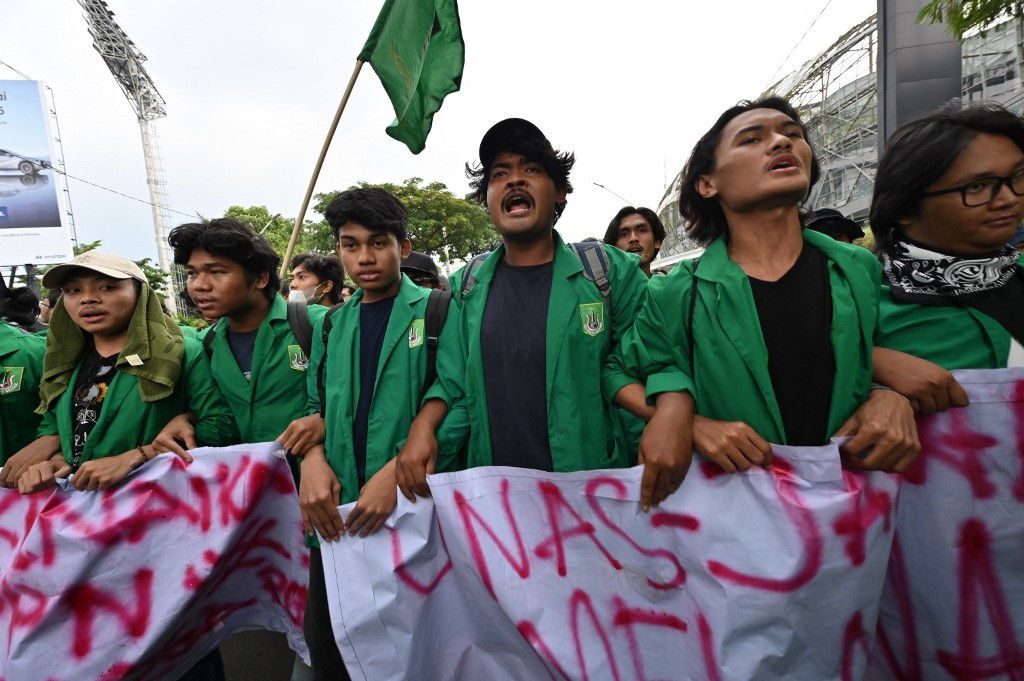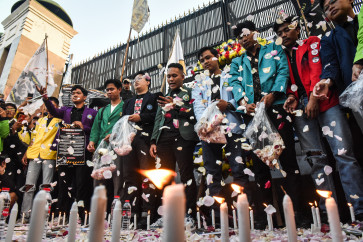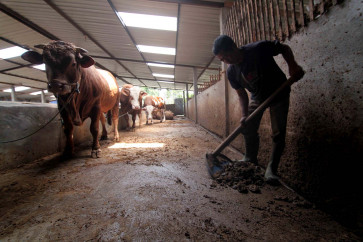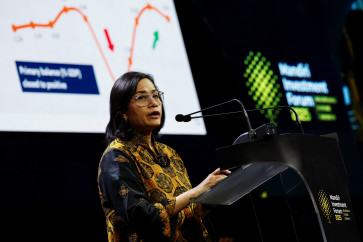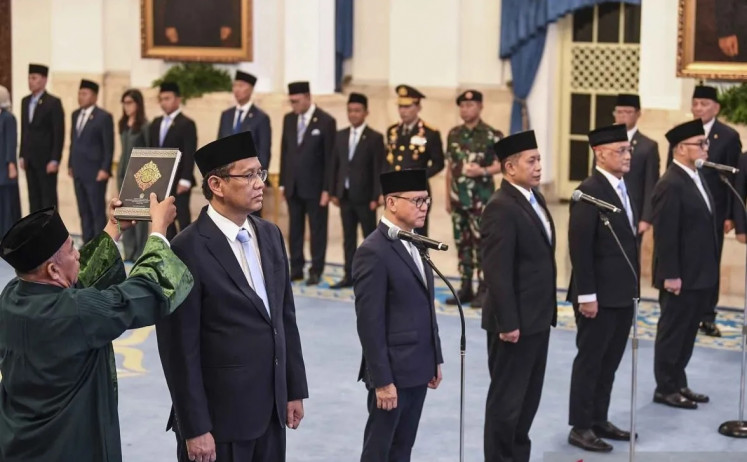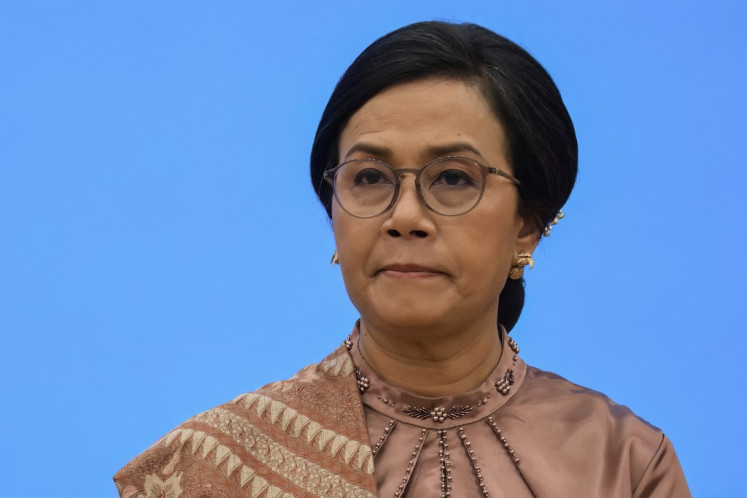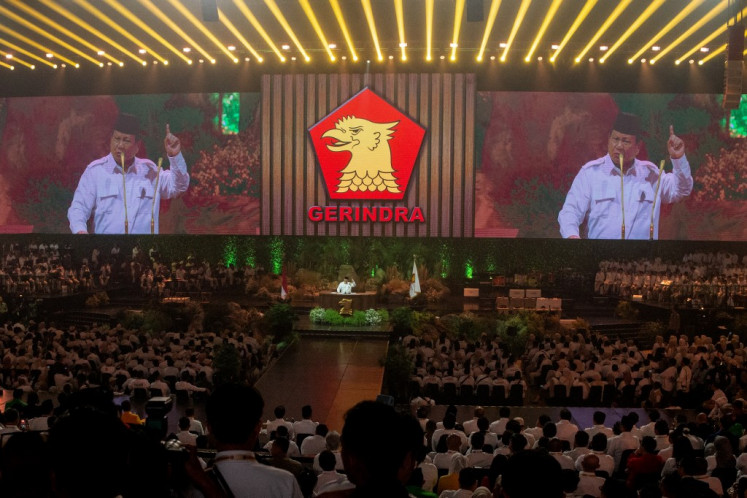Popular Reads
Top Results
Can't find what you're looking for?
View all search resultsPopular Reads
Top Results
Can't find what you're looking for?
View all search resultsStudent demonstrations, history and the Death Economy
Student demonstrations in the past and present often face the risk of being engineered by other bigger, political forces, or being infiltrated.
Change text size
Gift Premium Articles
to Anyone
W
hen students start hitting the streets to demonstrate, the government should start going "uh-oh". It is a sure sign that things are not going well.
According to Andre Arditya, “Throughout history, youth movements hold a generational consciousness of a better Indonesia”, which is also the title of the column he wrote (The Jakarta Post, Aug. 13, 2020). He noted, the most important student demonstrations occurred in 1908, 1928, 1945, 1966, 1974, 1978 and 1998.
And perhaps in 2022, April 11, in major cities across the country. Organized mainly by the All-Indonesia Students Executive Alliance (BEM-SI), these demonstrations were triggered by the possible delay of the 2024 elections and calls for President Joko “Jokowi” Widodo to have a third term (see “Parties row back on poll delay proposal”, The Jakarta Post, April 12).
Wow, shades of our first president Sukarno’s being proclaimed “president for life” in 1963, and also Gen. (ret.) Soeharto, Indonesia’s second president. The latter was never declared “president for life”, but effectively he was, being “reelected” every five years, ruling over Indonesia for 32 years.
No wonder the students had the heebie-jeebies about delaying the 2024 elections, which smacks of the nation’s authoritarian past and could derail whatever vestiges of democracy we have left, badly eroded as it has been in Jokowi’s second term (2019-2024).
Other BEM-SI demands were to lower the prices of basic commodities, including fuel and cooking oil; to reshuffle the Cabinet as they considered some of the ministers unprofessional and unable to face the economic crimes of the predatory oligarchy; and last but not least, to not amend the Constitution, which would have had to be done if Jokowi has a third term.
Student demonstrations in the past and present often face the risk of being engineered by other bigger, political forces, or of being infiltrated. Monday’s demonstrations seems to have been the latter. After they met with three House speakers at the House complex who agreed to the student’s demands, most of the students disbanded. But then some started hurling stones at the complex, which prompted the police to use tear gas and water cannons.
Then suddenly, University of Indonesia (UI) lecturer Ade Armando was brutally attacked by several people, causing his face to become bloodied and badly bruised. Ade claims he only came to observe the demonstration. Since he agreed with the demonstrators' demands, many were surprised he was assaulted.
Ade has been a controversial figure for a long time, as he often issued statements that have caused him to be summoned by the police and even taken to court. Somehow, he manages to avoid being prosecuted or indicted, which makes people believe he is above the law.
Besides being a lecturer, Ade is also one of the founders of Cokro TV, which produces political commentaries. He and some of his colleagues at Cokro TV, especially Denny Siregar, are often accused of being buzzers for Jokowi, which naturally they deny.
But according to a fellow writer and political observer who I shall call “Toni”, Ade and friends’ project is that of Islamic moderation, for which funds abound. They constantly fan the flames of anti-Islamists, labeling them as kadrun (kadal gurun, desert lizard) and stigmatize, denigrate, mock and taunt the ways various Muslim groups conduct their Islamic practices.
Before Monday, on one of his social media accounts Ade asked whether BEM demonstrators were not fasting as if questioning their Islamic-ness. He also accused the BEM student alliance of being fractured.
So, the real reason Ade came to the demonstration was to imply that BEM-SI was not a pure student movement, implying they were merely a group of intolerant kadrun students.
Toni further speculated, Ade wants to derail the real message of the BEM demonstration and keep the issue of intolerance and Islamic radicalism alive.
Recently I read The Political Dynasty of the Jokowi Family (2020), a 71-page ebook produced by Tirto.id. It traces and identifies the businesses, wealth and political power of the Jokowi family, from his sons Kaesang, a YouTuber and entrepreneur, Gibran, mayor of Surakarta in Central Java (as his father was), and his son-in-law Bobby Nasution, mayor of Medan in North Sumatra.
A similar book about the Susilo Bambang Yudhoyono (SBY) family was written in 2010 by the late George Junus Aditjondro, titled Dismantling the Cikeas Octopus behind the Bank Century Scandal. SBY was Indonesian president from 2004 to 2014. The book is described by Danang Widoyoko, coordinator of Indonesian Corruption Watch (ICW) as being written “to dismantle the network of collusion, corruption and nepotism (KKN) involving aides, relatives and people close to the president”.
And who can forget the even bigger KKN network of the Soeharto family who had 32 years to amass its fortunes?
Is there a pattern here? Could it be that Indonesians have an authoritarian mentality as a result of 350 years of Dutch occupation, which it has retained up to now?
I also came across some videos and articles about and by John Perkins, a former economic hitman (ECM), who wrote Confessions of an Economic Hitman (2004). In his book, Perkins describes ECM as “highly paid professionals who cheat countries around the globe out of trillions of dollars. Their tools include fraudulent financial reports, rigged elections, payoffs, extortion, sex and murder."
The result of all this is predatory capitalism, which Perkins calls the Death Economy. In a 2020 essay, he describes it as maximizing short-term profits for a relative few, uses fear and debt to gain market share and control, destroys resources, causes environmental destruction, invests heavily in militarization (think Ukraine), is top-down and undemocratic, values goods and services which are “extractive”, and has become the predominant advocate of what is called “capitalism” worldwide (Perkins, 2020).
In his 2004 book, he recounts his first mission in the 1970s was Indonesia. In horror, I realized, "Oh my God, the government has been selling the country out since the beginning of the Soeharto regime!" The new capital project, the cooking oil shortage, the state’s constant defense of capital over the environment and people, are all a reflection of the Death Economy that Indonesia has adhered to up to now. So, has even Jokowi, the president of the “little people”, also sold his soul to the Death Economy devil?
Back to Ade. He is not a buzzer for Jokowi, but even worse, for the system, i.e. the Death Economy: a highway to hell and destruction. Democracy is merely a rotation of elites, like what I learned as an undergraduate, about Elite Theory (Mosca, Pareto, Michels). This happens not just in Indonesia, but in many countries around the world.
Is there a way out? Perkins thinks there is, by “transforming the Death Economy into a Life Economy that cleans up pollution, regenerates devastated ecosystems, recycles and develops technologies that restore resources and that benefit, rather than ravage, the environment. Businesses that pay returns to investors who invest in an economy that is itself a renewable resource become the success stories.”
Not easy. Students should know: Demonstrations are not enough to save Indonesia.
***
The writer is the director of the Gender and Democracy Center (LP3ES).

